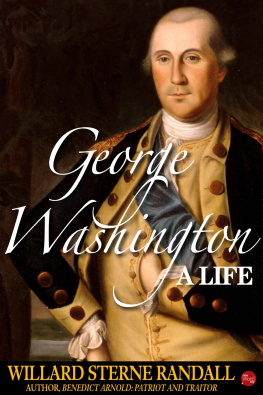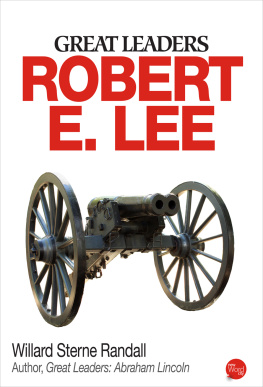Swiftly Sterneward
Swiftly Sterneward
Essays on Laurence Sterne and His Times in Honor of Melvyn New
Edited by W. B. Gerard,
E. Derek Taylor, and
Robert G. Walker
UNIVERSITY OF DELAWARE PRESS
Newark
For their generous support, the editors thank the Department of English and Modern Languages at Longwood University and the School of Liberal Arts and Department of English and Philosophy at Auburn University Montgomery.
Published by University of Delaware Press
Co-published with The Rowman & Littlefield Publishing Group, Inc.
4501 Forbes Boulevard, Suite 200, Lanham, Maryland 20706
www.rlpgbooks.com
Estover Road, Plymouth PL6 7PY, United Kingdom
Copyright 2011 by The Rowman & Littlefield Publishing Group, Inc.
All rights reserved . No part of this book may be reproduced in any form or by any electronic or mechanical means, including information storage and retrieval systems, without written permission from the publisher, except by a reviewer who may quote passages in a review.
British Library Cataloguing in Publication Information Available
Library of Congress Cataloging-in-Publication Data
Swiftly sterneward : essays on Laurence Sterne and his times in honor of Melvyn New / edited by W. B. Gerard, E. Derek Taylor, and Robert G. Walker.
p. cm.
Includes bibliographical references and index.
ISBN 978-1-61149-058-9 (cloth : alk. paper) ISBN 978-1-61149-059-6 (electronic)
1. Sterne, Laurence, 17131768Criticism and interpretation. I. Gerard, William Blake. II. Taylor, Derek (E. Derek) III. Walker, Robert G. (Robert Gary), 1947 IV. New, Melvyn.
PR3716.S95 2011
823.6dc22 2010050266
 The paper used in this publication meets the minimum requirements of American National Standard for Information SciencesPermanence of Paper for Printed Library Materials, ANSI/NISO Z39.48-1992.
The paper used in this publication meets the minimum requirements of American National Standard for Information SciencesPermanence of Paper for Printed Library Materials, ANSI/NISO Z39.48-1992.
Printed in the United States of America
Figure 1: The Woodcutters House (or The Woodcutters Return )
Oil on canvas, by Thomas Gainsborough (172788)
Belvoir Castle, Leicestershire, UK/The Bridgeman Art Library
Nationality / copyright status: English / out of copyright
Figure 2: The Cottage Door with Children Playing (1778)
Cincinnati Art Museum, Given in honor of Mr. and Mrs. Charles F. Williams by their children.
Figure 3: The Cottage Door (1780)
Courtesy of the Huntington Library, Art Collections, and Botanical Gardens. San Marino, California.
Figure 4: Peasant Smoking at a Cottage Door (1788)
Collection University of California, Los Angeles. Hammer Museum. The James Kennedy Collection.
Figure 5: Diana and Actaeon (c. 1786)
Oil on canvas
158.1 x 188 cm
The Royal Collection 2010, Her Majesty Queen Elizabeth II
Photographs of Tristram Shandy, The Quilt courtesy of Joan New
Introduction
Attentiveness, claimed seventeenth-century philosopher Nicholas Malebranche, is the natural prayer of the soul. For more than forty years, Melvyn New has engaged literature with an attentiveness that Malebranche, author of the tellingly titled The Search After Truth , would have found admirable. This volume seeks both to celebrate Professor News achievements and to recommend his practice to present and future scholars.
A balance of passive receptivity and active scrutiny, attention, for Malebranche, encapsulates the rationalists simultaneously skeptical and faithful approach to the quest for knowledge. Professor News own search for truth has been similarly grounded in a humble awareness that it will never be found. He once instructed his graduate students in a class on Jewish philosophy to circle the name of every thinker in their course readings about whom they knew little or nothing. The resulting lists functioned not as dead ends, but as warnings; Professor New was inviting his students not to leave their studies, but to join Socrates who, in believing he knew nothing, knew the one thing needful to the life of a scholar. No one can avoid making pronouncements about texts and figures based on secondhand knowledge; the alternative to doing so, as Professor New is quick to point out, is silence. He has continuously challenged himself, his students, and the profession as a whole to proceed as carefully and thoughtfully as possible, always slightly abashed by how careless and thoughtless, despite our best efforts, we necessarily will be.
Professor New became, for those students not intimidated by his reputation for rigor, a model of intellectual life. Teaching his first graduate course at the University of Florida in the late 1960s, he drew a circle on the blackboard and asked how many points lie within the circle? An infinite number. And how many without? Again, an infinite number. The circles circumference demonstrated the separation of good readings from bad without limiting the number of either. Throughout his career, Professor New would insist on the necessity of integrity, both in his teaching and in his writing, and that it was falseeven dangerousto believe that one persons view is as valid as anothers merely because it is held with equal conviction. Insipid moral relativism was one of his favorite phrases, frequently accompanied by a short quotation from Yeats: The best lack all conviction, while the worst / Are full of passionate intensity. He insisted that his students produce coherent arguments that respected the text they were treating. A student poorly arguing the professors position would be disappointed in the reception accorded his paper, while a student bold enough to argue well an opposing position would receive surprisingly good treatment, and a counterargument.
Tracing the roots of a persons intellectual development is an imprecise task, and many who experienced Professor New in a classroom might well believe that he was born to teach, but he himself would underscore his first-rate training. Growing up on Manhattans midtown east side, he was a feisty New York Giants baseball fan. Decades later he would joke that his life peaked with Bobby Thomsons shot heard round the world in 1951. He attended Stuyvesant High School and (a true hometown boy) Columbia University where, he has admitted, bright students who could do math became chemistry majors and bright students who couldnt do math became English majors. After serving a two-year stint as a naval officer, he returned in 1961 to literary studies as a graduate student at Vanderbilt University, where he wrote his dissertation under the direction of the noted and austere Pope scholar John M. Aden (Black Jack, as he was known among Vandy graduate students). Even though New became a full professor in 1976, only ten years after joining the Department of English at the University of Florida, he never lost interest in teaching lower-division courses, nor did he forget the burden put upon young scholars trying to juggle teaching and publishing, often at levels exceeding those of senior department members. Indeed, as chairperson from 1979 to 1988, one of his expressed concerns was the demanding workload facing new PhDs fortunate enough to have landed jobs, only to discover that they had arrived (as he put it in a memorable neologism) not in Camelot, but in Teachalot.
The simultaneous breadth and depth of Professor News scholarly writings, which will be addressed below, found its corollary in the range of assigned reading in a self-designed series of courses. One course included works by Cervantes, Conrad, Chekhov, Colette, Camus, Coetzee, Cela, Calvino, (Stephen) Crane, and Celan; another class covered Poe, Pushkin, Proust, Perz Galds, Pirandello, Platonov, Paton, Pasternak, and Pynchon. Such letter courses (he constructed similar ones for several other letters as well) did more than simplify Professor News book orders; they also illustrated his conviction that, properly approached, any truly enduring work of literature may usefully be read alongside any other. From the outset of each course, Professor New thus staked out implicitly a subtle, and potentially enlightening, argument for his students to consider as the semester unfolded: those unable to find resonance between, say, Don Quixote and The Plague discovered something not about the insufficiencies of these texts, but about the importance of continuing to develop their own reading skills.












 The paper used in this publication meets the minimum requirements of American National Standard for Information SciencesPermanence of Paper for Printed Library Materials, ANSI/NISO Z39.48-1992.
The paper used in this publication meets the minimum requirements of American National Standard for Information SciencesPermanence of Paper for Printed Library Materials, ANSI/NISO Z39.48-1992.